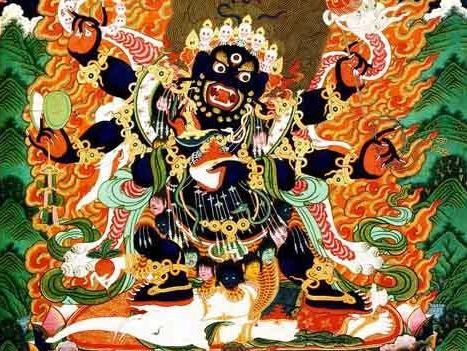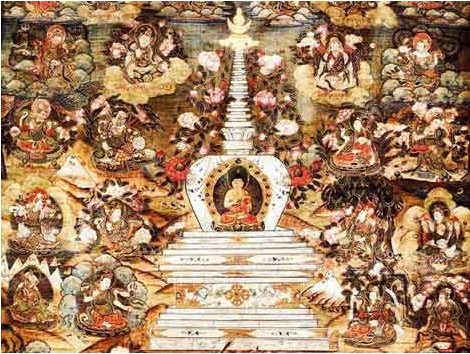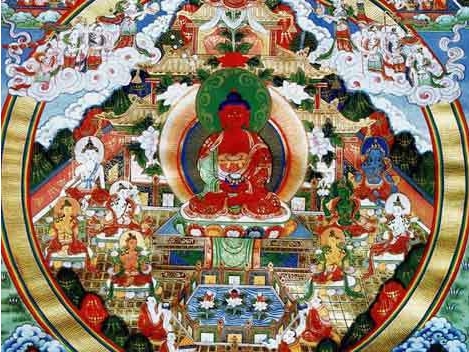
Thang-ga is a Tibetan word which refers to the scroll painting mounted with colorful satins and fabrics. It is the religious scroll painting hung in the hall for the Tibetans to worship. Thang-ga is famous for its florid color and takes traditional non-ferrous ore as the raw material. After the painting is drawn and mounted, colorful satins will be used to connect the frames as decoration. All the dye of Thang-ga is made manually. And because of the high pureness, strong covering capability of the dye, the painting will have gorgeous color and can be preserved for one thousand years without any change in color. Thang-ga is usually hung in palaces, temples, folk houses, and pray halls of the manors in Tibet.

Thang-ga art enjoys a long history. People can learn the beginning of the Thang-ga art through simple colored drawing and decorations found in the Ka-nuo Cultural Site 4-5 thousand years ago. According to the Recordation on the Dazhao Temple, Songtsen Gampo of Tibet painted the figure of Aleanterre Brahm all by himself after a sacrifice, and, in legend, this is the first Thang-ga. In terms of content, most of Thang-ga describes Tibetan religion, history, culture, art, science and technology, reveals the Tibetan's brief and wisdom, and records the civilization, history and development of Tibet.

Most of Thang-ga is produced by folk handicraftsmen and secularized monks, both of who, in general, have acquired the Tibetan language and are respectfully called "La-ru", namely, people who build Buddha, and enjoy a high prestige. Every big temple keeps a rather large number of Thang-ga. A big Thang-ga in the Potala Palace measures over 50 meters long and 40 meters wide. To preserve it, a storeroom of two floors covering an area of 340 square meters was specially built at the feet of Shaifo Platform. On every February 30 of Tibetan calendar, a treasure fair will be held in Lhasa, during which period several thousand of Lama dressed in Buddhist clothes, with various rare musical instruments, offerings and flags in hands, will depart from the Dazhao Temple through Liuli Bridge to the front of the Potala Palace to celebrate ritual and make various performances; at this time, the big Thang-ga of Buddha figure will be hung at the Shaifo Platform, forming a spectacular scene.





